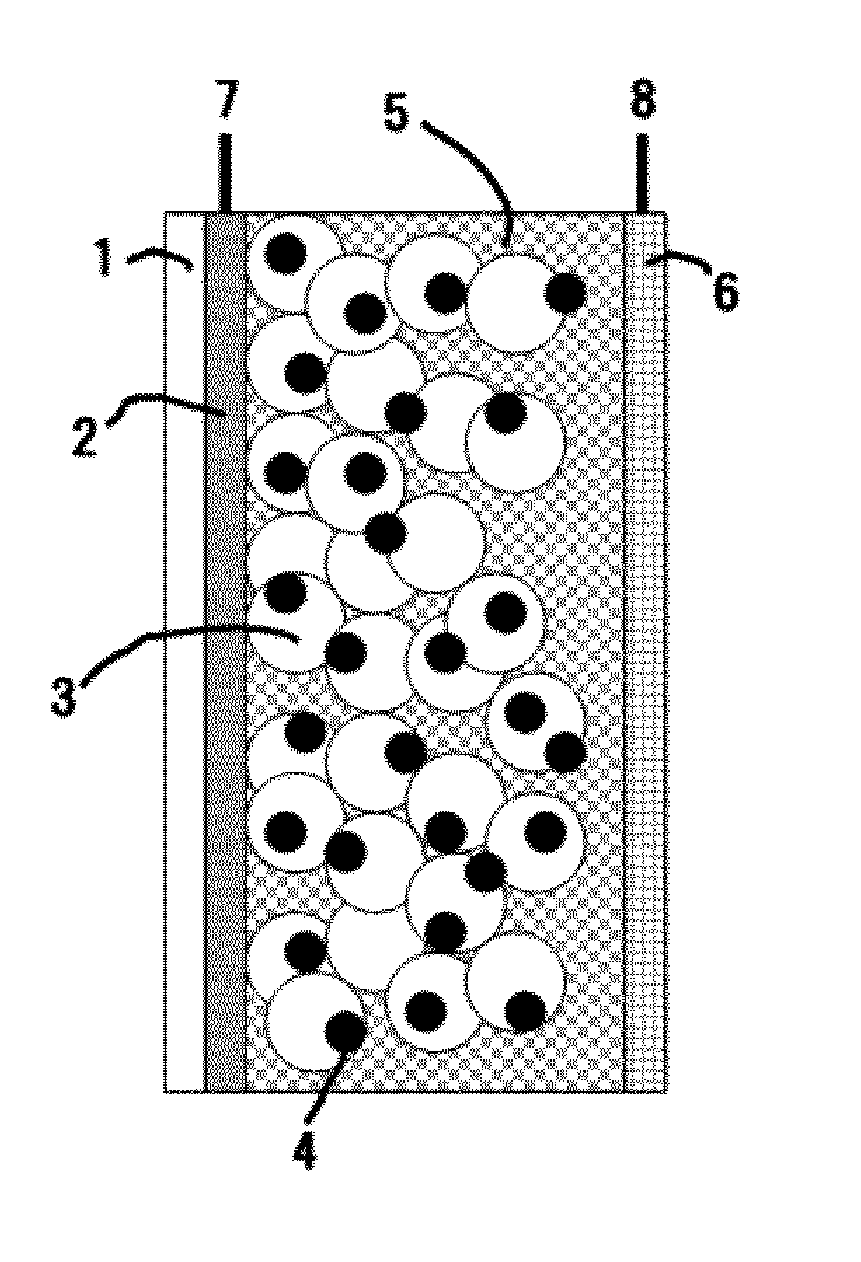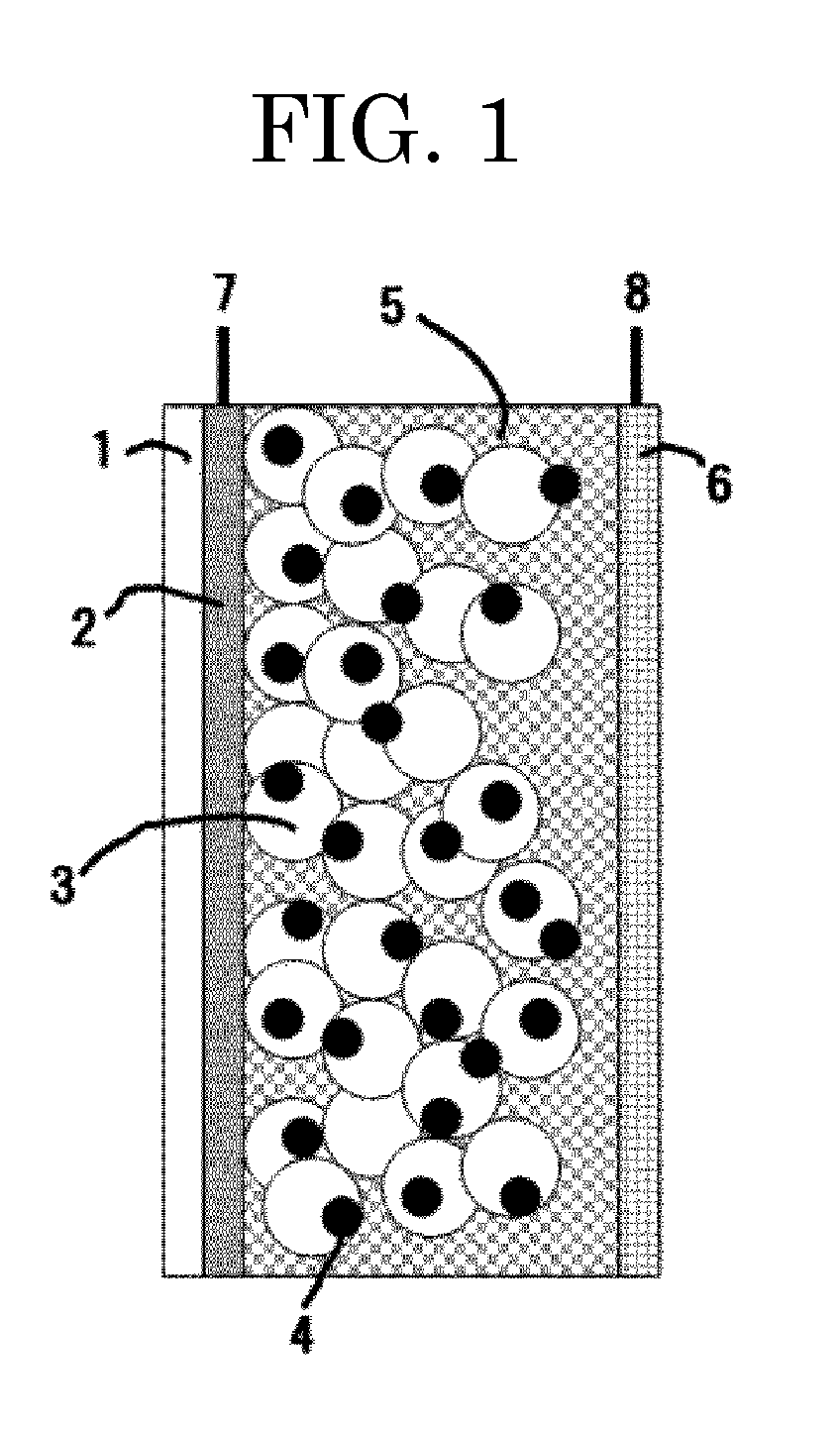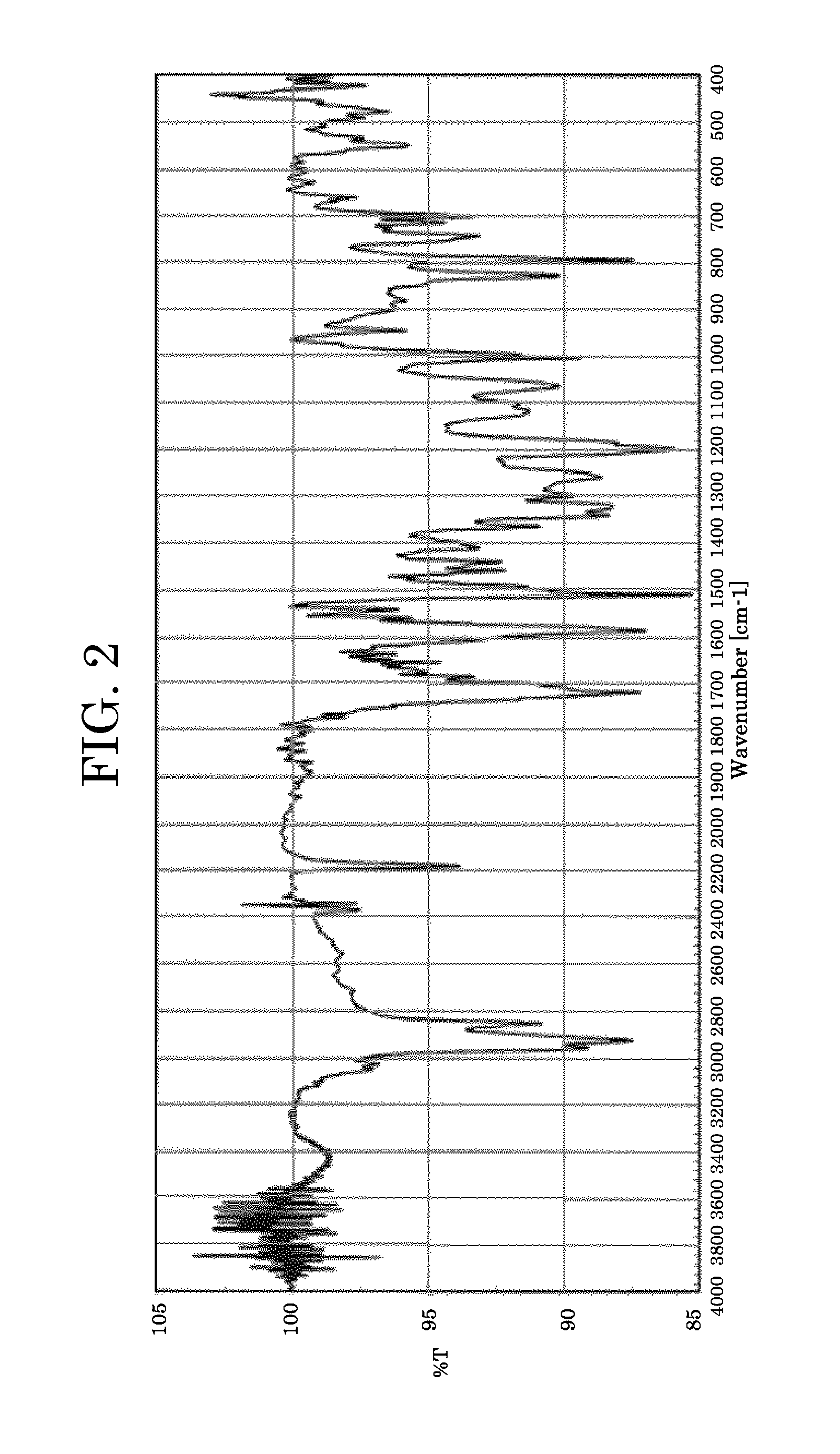Photoelectric conversion element and solar cell
- Summary
- Abstract
- Description
- Claims
- Application Information
AI Technical Summary
Benefits of technology
Problems solved by technology
Method used
Image
Examples
synthesis example 1
Synthesis of Exemplary Compound 1
[0177]
[0178]A porphyrin intermediate compound 1 (a triisopropylsilyl group-substituted compound; hereinafter abbreviated as “TIPS compound”) (9.8 mg, 0.01 mmol) was dissolved in anhydrous THF (5 mL), and the solution was stirred at room temperature in an argon gas atmosphere. Subsequently, 40 μL of Tetrabutylammonium Fluoride (1 mol / L in THF) (product of Tokyo Chemical Industry Co., Ltd.) was added dropwise to the solution, followed by reaction for 1 hour. The reaction mixture was extracted, and the organic phase was dehydrated with magnesium sulfate, filtrated, and concentrated, to thereby obtain a precursor.
[0179]Next, the obtained precursor and a rhodanine intermediate (8.1 mg, 0.02 mmol) were dissolved in a solvent mixture of anhydrous THF (5 mL) and triethylamine (1 mL), and the solution was stirred for 10 minutes at room temperature in an argon gas atmosphere. Then, Tris(dibenzylideneacetone)dipalladium(0) (2.3 mg, 0.0025 mmol) (product of Aldr...
synthesis example 2
Synthesis of Exemplary Compound 7
[0183]
[0184]A porphyrin intermediate compound 7 (49.3 mg, 0.05 mmol) was dissolved in anhydrous THF (25 mL), and the solution was stirred at room temperature in an argon gas atmosphere. Subsequently, 200 μL of Tetrabutylammonium Fluoride (1 mol / L in THF) (product of Tokyo Chemical Industry Co., Ltd.) was added dropwise to the solution, followed by reaction for 1 hour. The reaction mixture was extracted, and the organic phase was dehydrated with magnesium sulfate, filtrated, and concentrated, to thereby obtain a precursor.
[0185]Next, the obtained precursor and a rhodanine intermediate (53.24 mg, 0.1 mmol) were dissolved in a solvent mixture of anhydrous THF (25 mL) and triethylamine (5 mL), and the solution was stirred for 10 minutes at room temperature in an argon gas atmosphere. Then, Tris(dibenzylideneacetone)dipalladium(0) (11.5 mg, 0.0125 mmol) (product of Aldrich Corporation) and Triphenylarisine (30.6 mg, 0.1 mmol) (product of Tokyo Chemical In...
synthesis example 3
Synthesis of Exemplary Compound 8
[0186]
[0187]A porphyrin intermediate compound 8 (50 mg, 0.045 mmol) was dissolved in anhydrous THF (25 mL), and the solution was stirred at room temperature in an argon gas atmosphere. Subsequently, 180 μL of Tetrabutylammonium Fluoride (1 mol / L in THF) (product of Tokyo Chemical Industry Co., Ltd.) was added dropwise to the solution, followed by reaction for 1 hour. The reaction mixture was extracted, and the organic phase was dehydrated with magnesium sulfate, filtrated, and concentrated, to thereby obtain a precursor.
[0188]Next, the obtained precursor and a rhodanine intermediate (48 mg, 0.09 mmol) were dissolved in a solvent mixture of anhydrous THF (25 mL) and triethylamine (5 mL), and the solution was stirred for 10 minutes at room temperature in an argon gas atmosphere. Then, Tris(dibenzylideneacetone)dipalladium(0) (10.3 mg, 0.01125 mmol) (product of Aldrich Corporation) and Triphenylarisine (27.6 mg, 0.09 mmol) (product of Tokyo Chemical Ind...
PUM
 Login to View More
Login to View More Abstract
Description
Claims
Application Information
 Login to View More
Login to View More - R&D
- Intellectual Property
- Life Sciences
- Materials
- Tech Scout
- Unparalleled Data Quality
- Higher Quality Content
- 60% Fewer Hallucinations
Browse by: Latest US Patents, China's latest patents, Technical Efficacy Thesaurus, Application Domain, Technology Topic, Popular Technical Reports.
© 2025 PatSnap. All rights reserved.Legal|Privacy policy|Modern Slavery Act Transparency Statement|Sitemap|About US| Contact US: help@patsnap.com



